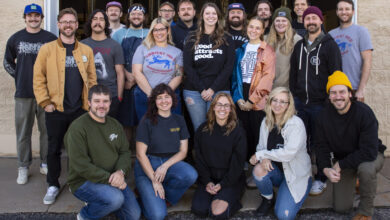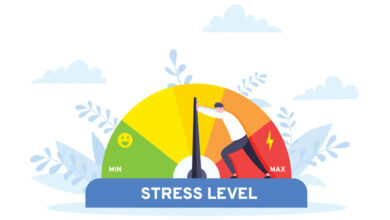It’s a common picture on the playground, two kids on either side of a plank, going up and down, screaming and laughing. I’ve seen adults doing it, too, but that’s a story for another magazine. It’s a simple thing really, enjoying the pull of gravity and the taking turns required to make it successful. The catch is: you can’t go up unless the other person goes down. It works the same in business.
What is a seesaw?
It’s an interesting word, seesaw, but it’s a unique thing. I couldn’t find a synonym in the thesaurus.
The loose definition of a seesaw on the playground is “a plaything consisting of a board balanced on a fulcrum; the board is ridden up and down by children at either end.”
Picture this mechanism as an analogy of your business in your local market. The kid on the other side of the board? Your competition. You need to stay up so you can keep them down. The best way to do that is with very clear messaging.
Laddering
Comparative messaging, sometimes called laddering, is a marketing technique where you try to get to the deepest essence of the customer’s motivation to buy your products and services. Once you get to the deepest, sometimes psychological depths of the customer’s motivation, you speak directly to that need with your messaging. While you are speaking to that deep, underlying motivation, you are simultaneously making a statement as to why your competition can’t fulfill it.
Apple does it with security
When you think of Apple products, you probably reach for the phone in your pocket or the computer on your desk. You may instinctively reach for the pods in your ear. If you bought an Apple product, think about why you bought it. Did it look good to you? Does it “just work”? Are all the alternatives clunky and hard to use? Apple knows all these reasons, and yet they don’t lead with that. They want you to think differently and they provide privacy protection. Did you buy their products because of these things? My guess is you’re shaking your head as you read this. I challenge you to think again. Apple tapped into a desire to be a certain kind of individual. They also played right into the emerging problem of many “surveillance-capitalism” big tech firms. They care about you keeping your secrets.
Apple effectively sits on one side of the seesaw, way up high while its competitors Microsoft and Google, are at the low end. When Apple says, “We are all about privacy,” what they are saying is those other guys don’t care about it. They are effectively saying “I know you, and they don’t.”
Politicians do it all the time
If you want a lesson in psychological marketing, look no further than a presidential candidate. This is the big leagues. George W. Bush beat John Kerry on decisiveness with the flip-flopper campaign. Barrack Obama beat John McCain on steady optimism by highlighting his vice-presidential candidate’s seeming outlandishness and unpredictability. Donald Trump beat Hillary Clinton on concern about the everyday American with his “Make America Great Again” campaign. In each of these examples, the statement says just as much about the candidate as it does about the opposition. It also goes to our deepest concerns about what we seek in leadership: decisiveness, steadiness, and relatability.
Market research is a key component of the seesaw
In any business, there are two constants:
- You must know the customer
- You must serve the customer
You can’t serve them very well without knowing them. This requires research. If you’ve been in the industry a long time, you may not have to do as much work because you are your target demographic. You opened your shop because you wanted to provide the kinds of products and services you couldn’t find on your own.
After you understand your customer, you need to give them what they want. As we’ve covered before many times, they’re not looking for a lower price. They are looking for a higher value. How can you communicate your higher value if your offerings look just like your competitors? By showing the customer that you understand their needs.
What does your customer really want?
For the consumer goods customer, the motivation is usually pretty simple: they want to be special. That’s why we buy cars, clothing, jewelry, furniture, personal items, etc. For the business customer, they want to avoid mistakes. That’s why businesses perform research, ask for payment terms, and sign contracts.
Think about why your typical customer walks into your shop. They want something custom for a special occasion or something unique for their business. They want a good deal. They want quality. They want value. Your messaging should provide the answer to those questions.
Think about your personal values
If you own the shop, what matters to you? If your boss owns the shop, what really matters to them? Try to identify up to three things that are really precious to the boss. Things they wouldn’t give up under any circumstances. Is it family? Is it patriotism? Is it a relentless obsession with customer service or product quality? Once you have those key values, find a way to make them black and white. The duality is what’s important because the competition is on the other side of the seesaw and you want to be on top. You can’t both be up high.
Spread your message
Effective laddering does not acknowledge the competition. It’s a subtle mind game. The customer will figure it out on their own. Keep the conversation between you and the customer and talk about how what you have in common creates an undeniable need for you to do business together. Once you hit that deep-seated motivation of your core customer, they’ll want to do business with you without ever thinking about why. In the great seesaw of market competition, you’ll always be on top.




